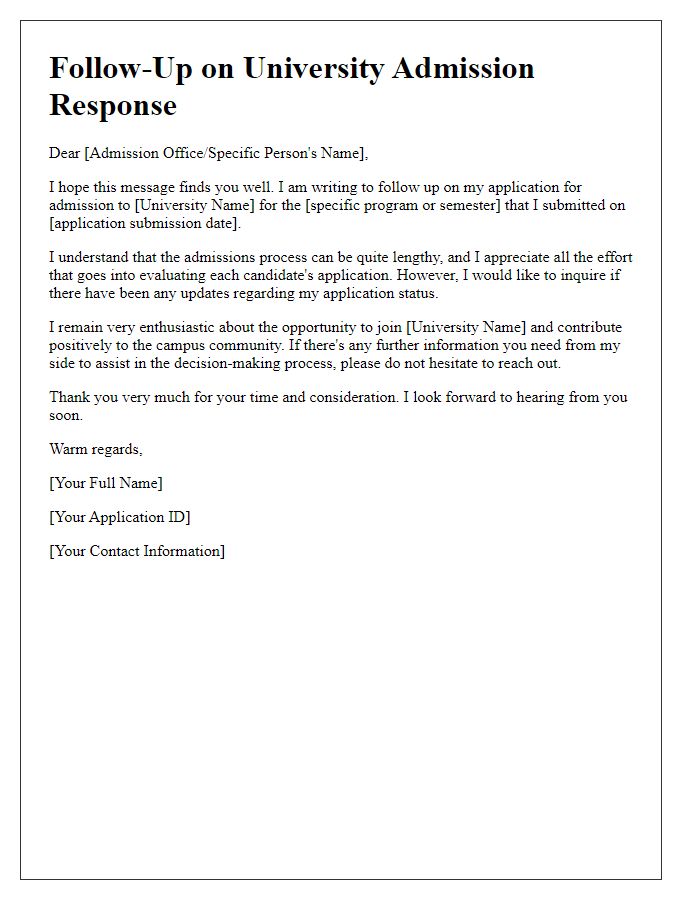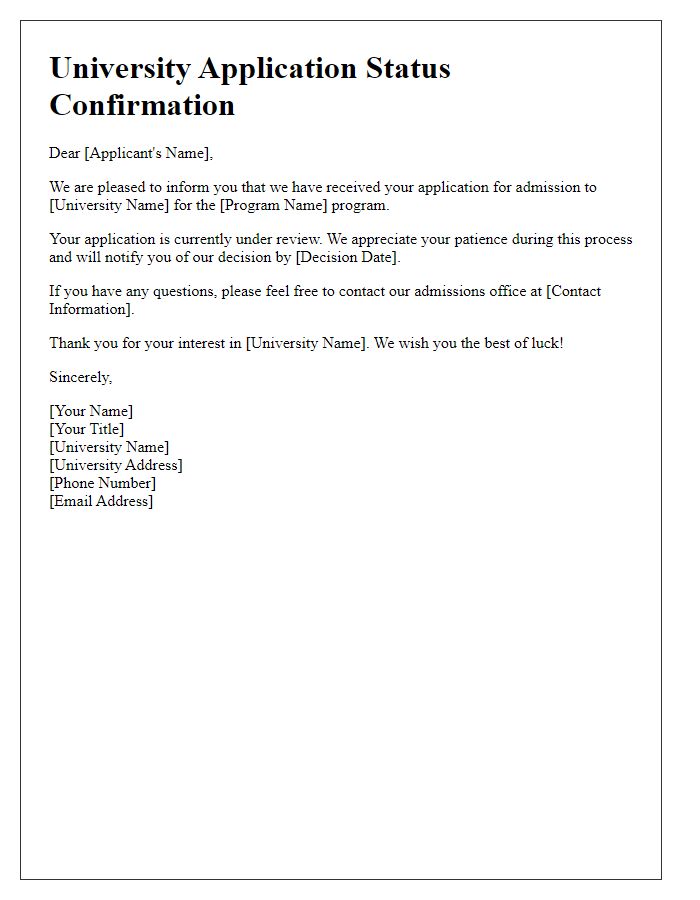Are you eager to know how to craft the perfect follow-up letter for your university admission? It's an essential step that can set you apart from other candidates by showing your enthusiasm and commitment. In this article, we'll guide you through the key elements to include, ensuring your message captures the attention of the admissions committee. So, let's dive in and explore how to make your follow-up letter shine!

Personalization and Address
Personalizing communication can significantly improve the impact of a university admission follow-up. Including specific details like the applicant's full name, prospective degree program, and the university's name establishes a connection. For instance, "Dear Admissions Committee of Harvard University," or "Hello Dr. Smith, [specific department] Admissions," create an immediate relevance. Including information about the program, such as "Master of Science in Computer Science" reflects the applicant's focus and intention. Furthermore, mentioning any pertinent dates, like application submission deadlines or interview days, enriches the context, showing active engagement and interest in the institution. Personalization not only conveys respect but also highlights the applicant's commitment to the unique offerings of the university.
Purpose and Clarity
A follow-up email for university admission serves a crucial purpose: to express continued interest in the program while seeking clarity on the status of the application. Timely communication (typically within two weeks of submission) ensures that the applicant remains informed about any additional requirements or deadlines. Admissions committees, often based at institutions like the University of California or Harvard University, appreciate follow-ups that are concise yet polite, reflecting the applicant's enthusiasm and professionalism. A well-crafted inquiry can prompt specific details regarding the timeline for decisions or required documents, helping applicants navigate the often competitive admission landscape.
Professional Tone
Following up on university admissions is crucial for prospective students to demonstrate continued interest and seek updates on their application status. A polite and professional email should include elements such as a clear subject line indicating the purpose, a brief introduction of oneself including the applicant's name and the program applied to, an expression of appreciation for the admissions committee's efforts, a request for any updates regarding the application status, and a thank you for their time and consideration, while ensuring to maintain a formal tone throughout. The communication should convey eagerness without appearing overly anxious, fostering a positive impression with the admissions team.
Contact Information
After submitting your university admission application, maintaining clear communication is essential for the follow-up process. Include your full name, such as John Smith, along with your applicant ID, often provided during application submission. Your contact phone number, typically a mobile number like (555) 123-4567, allows university admission offices to reach you directly. An email address, such as john.smith@email.com, ensures a prompt digital response. Consider including your mailing address, providing an added layer of contact points, which may be necessary for formal communications. Tailoring this information to the specific university, like Stanford University or Harvard University, can also demonstrate your genuine interest in the program.
Specific Requests or Questions
University applicants often seek clarity regarding their admission status, particularly after submitting their applications. Detailed inquiries may include requests for updates on application review timelines, information about missing documents, or specific questions about program requirements. Institutions, such as Harvard University or Stanford University, often have extensive evaluation processes that could span several weeks. Applicants may reference critical dates, such as decision release dates set for mid-March, to express urgency in receiving information. Understanding acceptance rates, which can be as low as 4% for competitive programs, increases the importance of timely communication. Direct communication through professional email or university admission portals facilitates this exchange, ensuring that applicants remain informed and prepared for potential next steps in the admissions process.













Comments